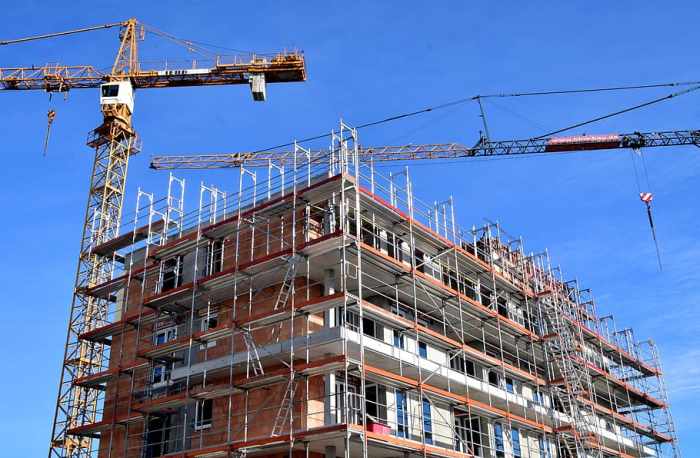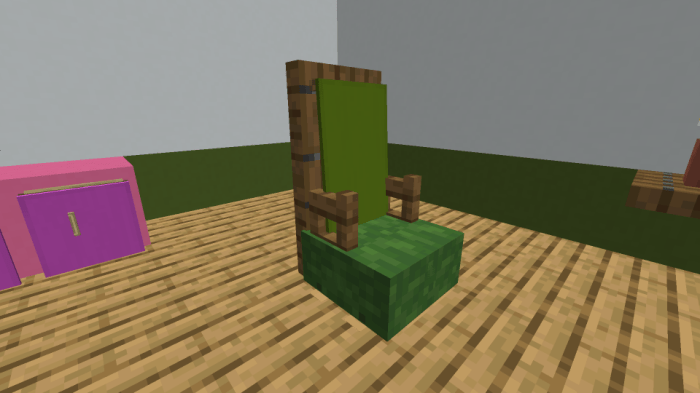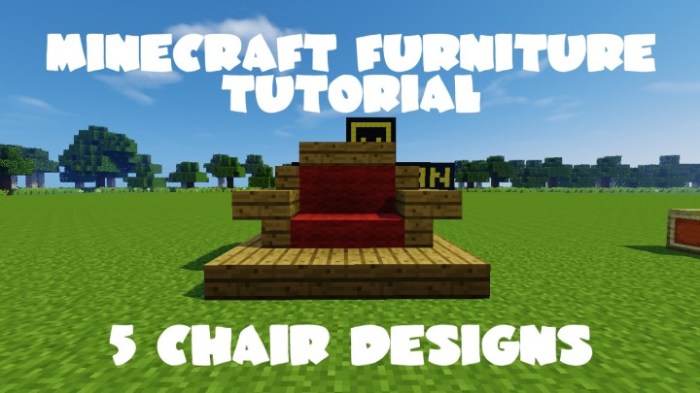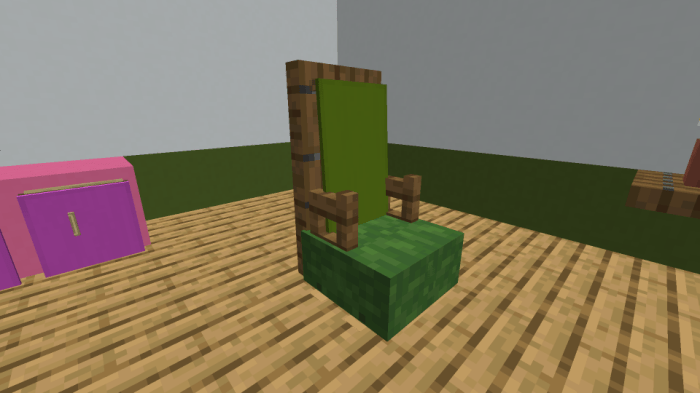Build a Horse Stable in Minecraft! This comprehensive guide walks you through crafting the perfect equine haven. From detailed design considerations to crafting resources and maximizing functionality, we’ll cover everything you need to create a stable that’s both beautiful and practical. Get ready to house your equine companions in style!
Imagine a magnificent stable, meticulously crafted, nestled within your Minecraft world. This guide provides detailed plans, from basic layouts to elaborate designs. We’ll explore various materials, architectural styles, and features to create a stable that truly stands out.
Design Considerations: Build A Horse Stable In Minecraft
Crafting a magnificent horse stable in Minecraft transcends mere functionality; it’s an opportunity to showcase architectural prowess and artistic flair. Careful planning is key to creating a stable that is both visually appealing and practical, seamlessly integrating with your existing world or village. This section delves into various design considerations, offering a multitude of options to inspire your equine-themed construction project.Thorough planning, including consideration of space requirements, material choices, and aesthetic preferences, will ensure a stable that serves both the practical needs of your horses and enhances the overall beauty of your Minecraft world.
Addressing these factors ensures that your creation stands out from the typical Minecraft structures, becoming a distinctive feature.
Stable Layouts
Different stable layouts cater to various needs and preferences. The shape and size directly impact the number of horses accommodated and the available storage space. Rectangular structures are simple and efficient, while more complex shapes, like L-shaped or U-shaped layouts, can maximize space utilization. Consider the number of horses you intend to keep and the amount of storage needed when choosing a layout.
Circular or hexagonal stables, though more intricate, can add a unique visual appeal.
Stable Sizes and Shapes
A small stable, perhaps 3×3 blocks, might suffice for a single horse, including basic storage. A medium-sized stable, 5×5 blocks or larger, is ideal for multiple horses and greater storage. For larger stables, 7×7 or more, you can incorporate multiple stalls, a tack room, and a feeding area. The shape of the stable can also impact its aesthetic.
A long, narrow stable might look more like a barn, while a square or rectangular one feels more contained and cozy.
Architectural Styles
The architectural style can be adapted to fit your Minecraft world’s theme. A rustic, wooden stable would be ideal for a woodland environment. A more modern, stone or brick structure could fit into a futuristic or urban setting. Even incorporating elements of medieval castles or ancient ruins can create a unique and captivating stable. Consider the surrounding terrain and the overall aesthetic you are aiming for.
Materials and Blocks
Material choices significantly impact both the practicality and aesthetic of your stable. Wood, while aesthetically pleasing, is susceptible to damage. Stone and brick offer durability and a more substantial look. Using different coloured materials for different sections, like using light grey stone for the walls and a darker grey stone for the roof, can provide visual appeal and contrast.
You can also consider more advanced materials like glass or obsidian for windows and special features, providing both practicality and visual appeal.
- Wood: Provides a rustic look, but is prone to damage. Suitable for smaller stables or those in wooded areas.
- Stone: Offers durability and a classic aesthetic. Excellent for larger stables or those needing greater longevity.
- Brick: Provides a sturdy and visually appealing structure.
Ideal for stables in towns or villages.
- Glass: Offers a modern and spacious feel. Use for windows or other transparent features.
- Obsidian: Provides a sleek and dark aesthetic. Excellent for adding a touch of sophistication.
Integrating the Stable
Integrating a stable into an existing Minecraft world or village can enhance the immersion and realism. Place it near a farm or a horse breeding area to reflect its purpose. Consider placing it near a village for community engagement, or integrate it into a larger farm complex for a more extensive design. You can even incorporate it into a larger castle or fortress for an even more grand structure.
Strategically positioning the stable will significantly enhance its impact on your Minecraft world.
Decorative Elements
Personalizing your stable is essential to make it truly unique. Add decorative elements like banners, paintings, or crafted signs to personalize the space. Consider using flowers, vines, or torches to enhance the visual appeal. Using different coloured wool or stained glass panes for windows can significantly enhance the aesthetic. The choice of decorative elements will reflect your personal style and the atmosphere you wish to create within the stable.
Building a horse stable in Minecraft can be surprisingly satisfying, especially when you’ve got the right resources. But sometimes, the most intricate projects require a little extra care, like washing a human hair weave. Learning how to properly care for your weave is key to maintaining its health and beauty, just as building a stable requires thoughtful planning.
You can find helpful tips on how to wash a human hair weave Wash a Human Hair Weave to ensure it lasts a long time. After all that, it’s back to Minecraft, and the joy of a well-built stable for your equine friends!
- Banners: A simple yet effective way to add color and personality.
- Paintings: Showcase your artistic skills or reflect the theme of your stable.
- Signs: Display important information or add personal touches.
- Flowers/Vines: Enhance the natural aesthetic and create a sense of life.
- Torches: Provide lighting and add visual interest.
- Wool/Stained Glass: Offer varied colors to enhance the visual appeal of windows.
Crafting and Resources
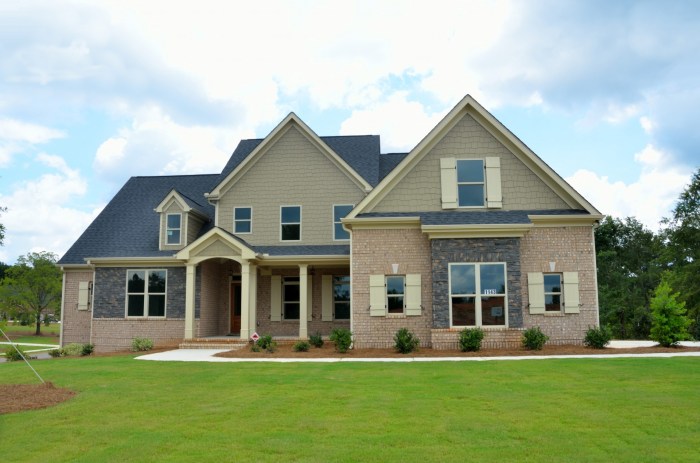
Building a sturdy horse stable in Minecraft requires careful planning and efficient resource management. Understanding the necessary materials and their acquisition methods is crucial for a successful project. This section delves into the crafting recipes, resource types, and optimal strategies for gathering materials, providing a comprehensive guide for any aspiring stable builder.
Crafting Recipes for the Stable
Minecraft stables are constructed using various blocks. Understanding the required crafting recipes for each block is essential for efficient building. These recipes dictate the specific materials and quantities needed to create each component. The crafting table is the central hub for these processes.
Required Resources, Build a Horse Stable in Minecraft
The construction of a stable demands a range of materials. These include different types of wood, stone, and specialized blocks. Choosing the right materials significantly impacts the overall aesthetic and structural integrity of the stable.
- Wood: Various wood types, such as oak, spruce, birch, jungle, acacia, and dark oak, are used for basic construction elements. Each wood type provides different aesthetic options for the stable’s exterior. Different wood types may require different quantities for the same structural component.
- Stone: Stone blocks, such as cobblestone, and various stone variants, are vital for foundational structures and certain decorative elements. Stone’s durability contributes to the stable’s longevity.
- Special Blocks: Items like chests, doors, and pressure plates are integral for functionality. These enhance the usability and practicality of the stable, allowing for storage and controlling access.
Resource Quantities for Varying Stable Sizes
The amount of resources required directly correlates with the size and complexity of the stable. A small stable will necessitate fewer resources than a large, elaborate structure.
Building a horse stable in Minecraft can be a rewarding project, but sometimes you encounter a bit of a snag. Like when you need to get a water pump working properly. Learning how to effectively “Prime a Water Pump” Prime a Water Pump is crucial for a functional stable, ensuring a constant water supply for your equine friends.
A properly working water pump is essential for a successful horse stable build, after all!
| Stable Size | Wood | Stone | Chests | Doors |
|---|---|---|---|---|
| Small | 20-30 logs | 10-15 cobblestone | 1-2 chests | 2-3 doors |
| Medium | 40-50 logs | 20-30 cobblestone | 2-3 chests | 4-5 doors |
| Large | 60-80 logs | 30-40 cobblestone | 3-4 chests | 6-8 doors |
Efficient Resource Gathering
Efficient resource gathering is key to minimizing the time spent on the construction process. Exploring different biomes and utilizing tools effectively are crucial steps. Specific biomes, like forests, offer abundant wood resources. Likewise, mountainous areas often contain significant stone deposits. Employing tools like axes and picks significantly accelerates the gathering process.
Alternative Resource Acquisition Methods
Sometimes, certain resources may be scarce in the immediate area. Alternative methods exist to acquire necessary resources, ensuring that construction doesn’t stall. Trading with other players or utilizing crafting recipes to transform existing resources into the desired materials are useful methods.
Functionality and Features
Crafting a functional horse stable in Minecraft goes beyond just aesthetics; it’s about creating a safe and efficient environment for your equine companions. This section delves into the practical aspects of designing a stable that seamlessly integrates with your Minecraft world, from housing multiple horses to implementing advanced features. A well-designed stable allows for easy management and enhances the overall experience of horse ownership within the game.A robust stable design should prioritize both the immediate needs of the horses and the long-term potential for expansion and customization.
Careful planning for storage, feeding, and management will result in a stable that effectively accommodates your growing equine population. This includes not only the stalls but also areas for grooming, potential breeding, and blacksmithing, should you choose to incorporate these elements.
Horse Stalls and Management
A well-organized stable requires individual stalls for each horse. These should be spacious enough for the horse to move freely, but also secure enough to prevent escape. The stalls should include a comfortable bedding area, allowing for rest and preventing injuries. Multiple stalls can be arranged in a linear fashion or in a more complex layout, depending on the size of the stable.
Consider using fences or walls to create clear boundaries between stalls.
Feeding Troughs and Automated Systems
Feeding troughs are crucial for maintaining the health of your horses. They should be large enough to accommodate the daily feed requirements of each horse. For convenience and efficiency, consider integrating automated feeding systems. This could involve hoppers, dispensers, or custom-built mechanisms that deliver food to the troughs automatically, ensuring your horses are always well-fed. A simple automated system can dramatically reduce the time spent on manual feeding, freeing you up for other tasks.
Storage and Organization
A well-organized stable requires dedicated storage areas for hay, grain, tack, and other essential supplies. Consider using chests, hoppers, and custom-built storage structures to maximize space and ensure everything is easily accessible. Clear labeling and a logical layout will help you quickly locate items when needed. This ensures a seamless and efficient operation. For example, a designated area for saddles and harnesses can prevent clutter and reduce the risk of misplacing equipment.
Security Measures
Adding security measures is an important aspect of a well-designed stable. Consider using fences, reinforced walls, or even traps to prevent unwanted intruders from entering the stable. These security measures are vital for the safety of your horses and to maintain a safe and secure environment.
Blacksmith Shop and Breeding Area
Expanding on the core functionality, integrating a blacksmith shop can provide services for repairing horse tack and equipment. This could involve a simple anvil, crafting table, and necessary resources. A dedicated breeding area can enhance the stable’s functionality, enabling horse breeding and the management of foals. This area can be designed with separate enclosures and resources to facilitate the breeding process.
Building a horse stable in Minecraft is surprisingly satisfying, especially when you consider the meticulous planning involved. You need to gather resources, design the layout, and even account for the aesthetics! It’s a bit like creating a digital equine haven, and then, listening to some tunes to get you in the mood, check out this track about a bear by skrillexp oo bear would you ever skrillexp oo bear would you ever.
The music will undoubtedly fuel your creativity as you finalize the stable’s design and furnishings, and hopefully, your digital horses will appreciate the effort!
A well-equipped blacksmith shop and breeding area contribute to the overall value and practicality of the stable.
Easy Access and Management
The layout of the stable should prioritize easy access and management. Paths should be wide enough for easy movement, allowing for quick and efficient checks on each horse. Clear signage and designated areas for specific tasks will improve efficiency. The goal is to create a stable where managing your horses is simple and straightforward. A well-thought-out design ensures your horses’ comfort and your ease of management.
Visual Representation
Building a Minecraft horse stable isn’t just about function; it’s about crafting a visually appealing structure that reflects the desired aesthetic. From humble beginnings to elaborate designs, the visual representation of the stable can significantly enhance the overall experience. This section explores various design approaches, from simple and rustic to intricate and modern, and how these choices impact both the appearance and practicality of the stable.Different architectural styles offer unique visual appeals and can be adapted to various Minecraft landscapes.
Understanding these styles allows players to create stables that match their personal preferences and the environment they’re building in. By considering both aesthetics and functionality, the stable can become a centerpiece of the Minecraft world.
Different Visual Representations
Various designs cater to different aesthetics and functional needs. Simple stables, often consisting of a single, enclosed area, are ideal for basic housing. More complex designs can incorporate multiple stalls, hay storage, and even decorative elements. These variations offer a range of visual choices, allowing players to craft a stable that perfectly suits their needs and creativity.
- Simple Stables: These are basic rectangular or square structures, often with a single entrance. They’re straightforward to build and ideal for smaller horse populations or as part of a larger farm complex. Visual appeal is kept minimal, prioritizing function.
- Complex Stables: These can incorporate multiple stalls, separated by partitions. Additional features like hay storage areas, tack rooms, and even decorative elements like intricate roofs or balconies, increase the visual appeal and functionality.
- Medieval Stables: These designs typically feature a steeply pitched roof, stone or wood walls, and a large, imposing entrance. This style evokes a sense of antiquity and grandeur, creating a visual statement. Think of a fortified barn or stable from historical illustrations.
- Rustic Stables: These stables utilize natural materials like wood and stone, often with exposed beams and natural textures. They offer a warm, inviting feel and blend well with wooded or countryside settings. Imagine a charming log cabin-style structure.
- Modern Stables: These utilize clean lines, modern materials like glass and metal, and minimalist designs. They present a sleek, contemporary aesthetic, well-suited for a more futuristic or technologically advanced Minecraft world.
Architectural Styles
Different architectural styles influence the visual representation of the stable, offering unique characteristics and aesthetics. Each style evokes a distinct mood and atmosphere, enabling players to personalize their stable to fit their vision.
- Medieval: Characterized by thick walls, high roofs, and imposing features, medieval stables often evoke a sense of strength and protection. Imagine a large stone structure with crenellations, or battlements, on the roof. The overall impression is one of robust and sturdy construction.
- Rustic: Rustic stables often employ natural materials like wood and stone, with an emphasis on natural textures. Exposed beams and natural wood siding contribute to a warm and welcoming atmosphere. The design is often inspired by traditional farmhouses.
- Modern: Modern stables emphasize clean lines, smooth surfaces, and the use of advanced materials. Glass walls and metal roofs are frequently used to create a sleek and futuristic aesthetic. The overall impression is one of sophistication and innovation.
Design Comparison Table
This table Artikels the key strengths and weaknesses of various stable designs, considering both aesthetics and functionality.
| Design Style | Materials Used | Functionality | Image Description |
|---|---|---|---|
| Simple | Wood, logs | Basic horse housing, easily expandable | A rectangular structure with a simple roof and a single entrance. Walls are made of wood planks. |
| Medieval | Stone, cobblestone, wood | Sturdy and imposing, potentially multiple stalls | A large, rectangular structure with a high, steeply pitched roof made of wooden planks. Walls are constructed of stone or cobblestone blocks. |
| Rustic | Wood, logs, stone, planks | Warm and inviting, blends well with nature | A structure with exposed wooden beams, natural stone accents, and a slightly sloped roof made of wooden planks. |
| Modern | Glass, metal, smooth stone | Sleek and sophisticated, potentially advanced features | A structure with a minimalist design using glass panels, metal roofing, and smooth stone walls. Features minimal ornamentation. |
Lighting and Decoration
Proper lighting and decoration significantly enhance the visual appeal of the stable. Lighting should illuminate the interior without being overly harsh, while decorations add personality and character.
- Lighting Options: Torches, lanterns, and even glowstone can be used to create warm, inviting light. Strategically placed torches can highlight key areas, while lanterns create a more diffused glow. Glowstone provides a bright, even light, perfect for illuminating larger spaces. Consider using a mix of these for varied effects.
- Decoration Ideas: Hay bales, saddles, horse figurines, and banners can add character and personality. Placing these elements thoughtfully creates a cohesive and appealing design. Consider adding small details like well-placed buckets or tools for a rustic or medieval feel. Using items like stained glass can add a modern or medieval feel.
Integration and Expansion
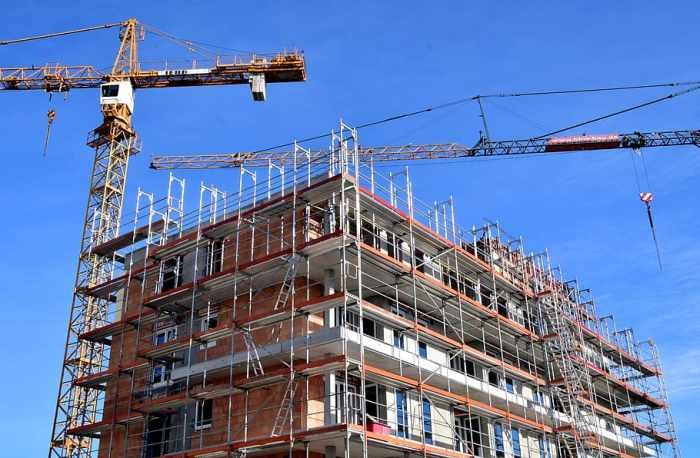
Building a Minecraft horse stable is a rewarding project, but its value truly shines when integrated into a larger world. This section explores different methods of seamlessly incorporating the stable into an existing Minecraft environment, allowing for expansion and modification to suit evolving gameplay. From simple additions to significant upgrades, the stable can adapt to the player’s changing needs and preferences.The key to a successful integration lies in careful planning.
Consider the surrounding environment and the stable’s intended role within the world. Will it be a central hub for a village, a secluded retreat for a player’s personal herd, or something in between? These considerations will guide the design decisions for both initial construction and future expansions.
Integrating into Existing Worlds
The stable’s integration should be natural and aesthetically pleasing. Avoid jarring contrasts between the stable and the surrounding landscape. Consider the existing structures and vegetation when placing the stable. For example, if the area has a dense forest, place the stable near the edge of the forest, with trees incorporated into the design. If the location is open, you could surround it with fields or create a small, enclosed pasture.
Mimicking the existing terrain ensures a more harmonious integration into the world.
Expanding the Stable
Expanding the stable should be a thoughtful process, maintaining the original aesthetic. A simple addition might be a separate tack room, equipped with crafting tables for saddles and harnesses. An upgraded stable could include a grooming area with a wash station for cleaning horses. A more elaborate expansion might incorporate a small arena for training or racing horses.
Expansion plans should always be designed to enhance the stable’s functionality without detracting from its initial appeal.
Accommodating Growing Horse Populations
A well-planned stable design can accommodate a growing horse population. Consider incorporating multiple stalls, each with its own feeding trough and space for grooming. A significant expansion could include a separate paddock area for exercising and grazing. Adding multiple stable doors or larger entryways can improve the flow of horses through the stable. This will allow for efficient management of the growing horse herd.
Adding Rooms and Features
The stable’s aesthetic should be maintained during room additions. A hayloft can be added to store hay and other supplies, while a blacksmith’s forge could be integrated for creating custom horse equipment. A small office or a storage room for additional supplies could improve functionality. The design should be seamless, blending new elements into the existing stable structure without compromising the initial vision.
Visual Representation and Integration with Surroundings
The surrounding environment should complement the stable’s design. Incorporate trees, bushes, and other decorative elements that harmonize with the overall theme. For example, if the stable is located in a mountainous region, consider incorporating rock formations and waterfalls. If it’s a village stable, integrate structures that are typical for the region, such as houses or shops. The surrounding environment should enhance the stable’s appeal and make it a natural part of the Minecraft world.
Ultimate Conclusion
Building a horse stable in Minecraft is more than just a project; it’s a journey of creativity and resourcefulness. This guide has equipped you with the knowledge and inspiration to design and build a stable that reflects your style and gameplay. From simple designs to elaborate expansions, you’re empowered to create the ultimate equine sanctuary in your Minecraft world.
